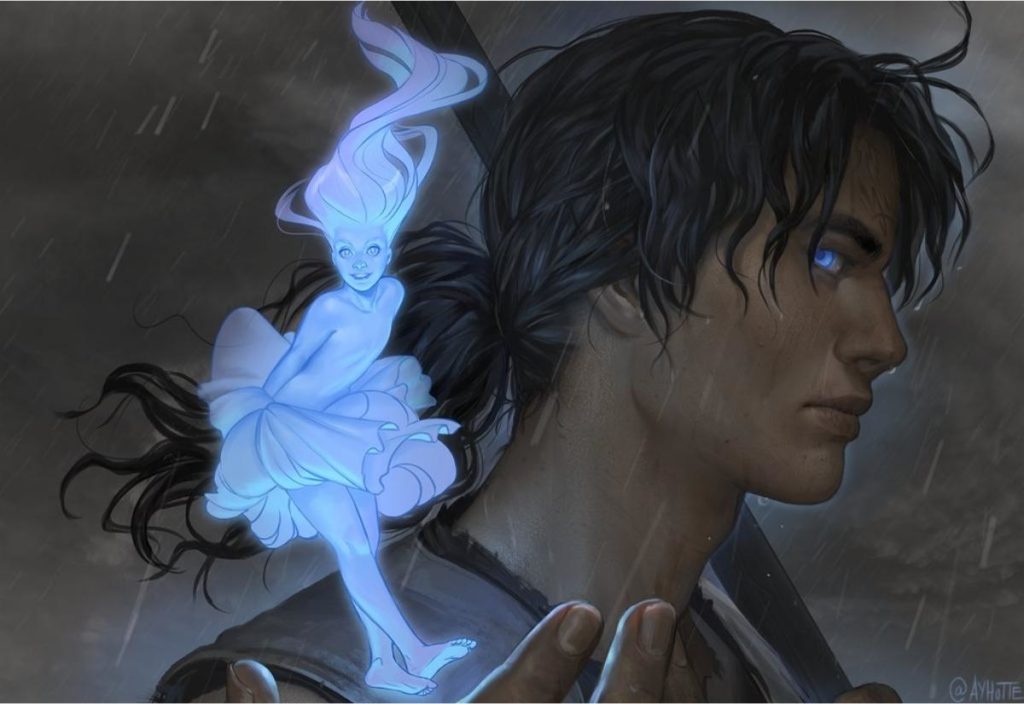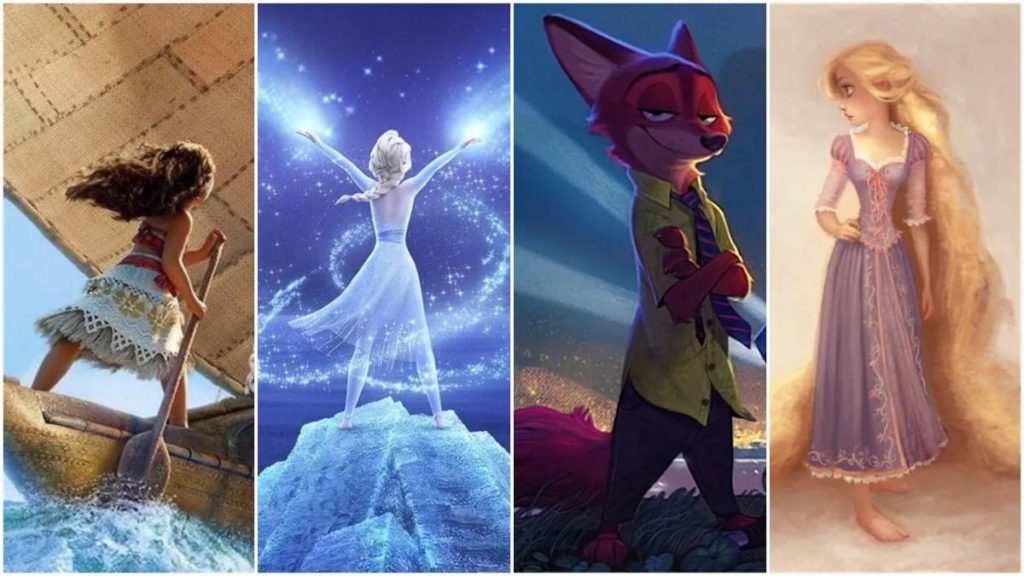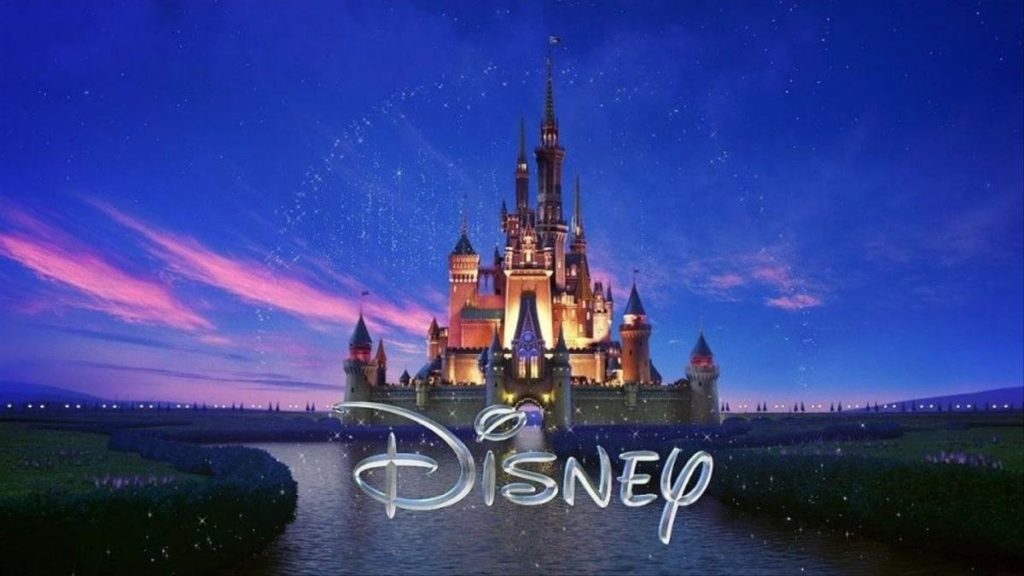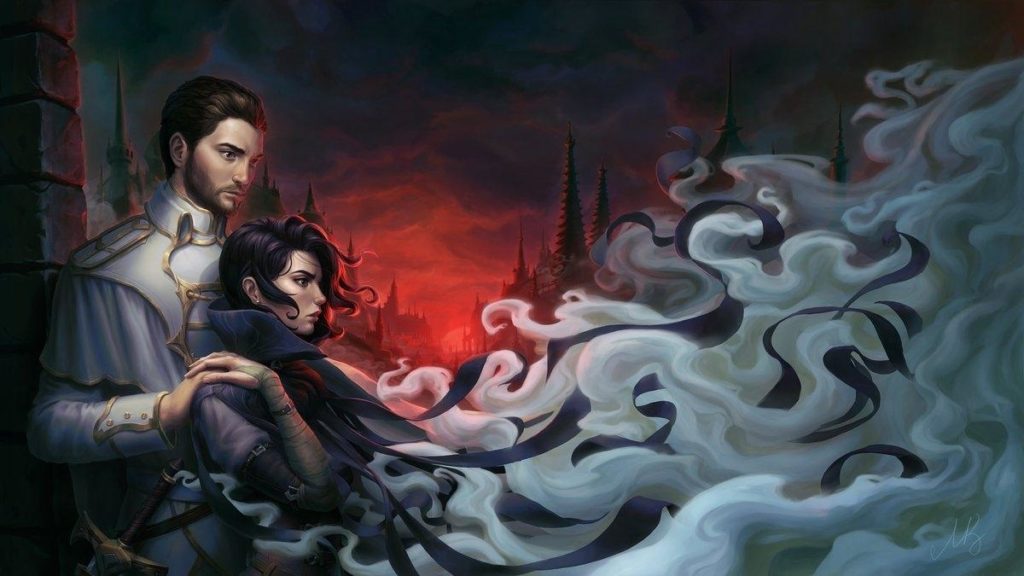Ranking all the Disney Renaissance Movies From the 90s From Worst to Best
By: Preston Simmons
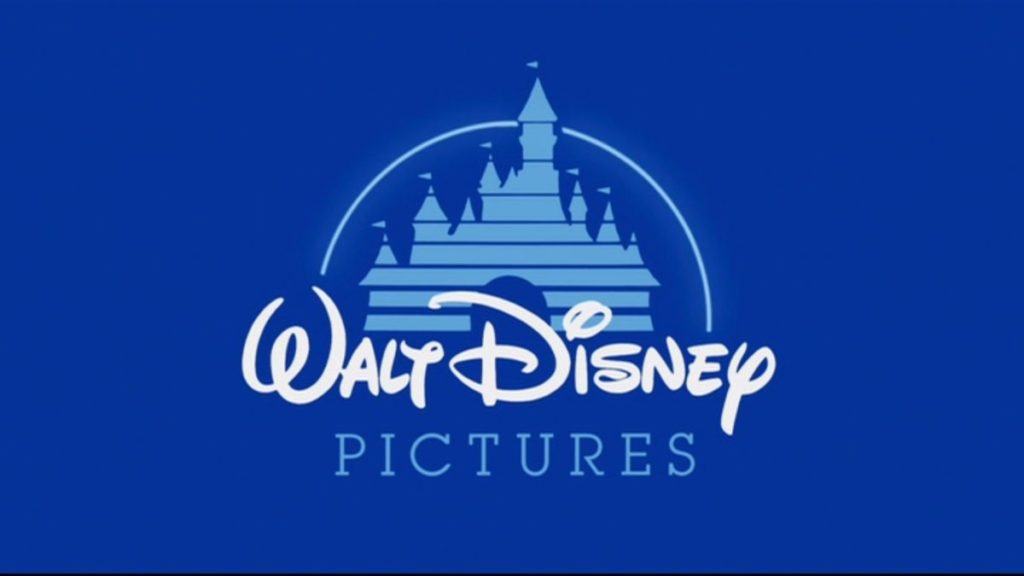
Disney’s Greatest Era of Movies
The Disney Renaissance Era (1989-1999) is considered by many to be the most significant 10-year span in the history of Disney Animation Studios. With classics like The Little Mermaid and Beauty and the Beast and nine other highly acclaimed movies, a few being widely considered masterpieces, the Disney Renaissance Era arguably contains Disney’s best films to date.
The Disney Renaissance Movies, in order of release, are:
- The Little Mermaid (1989)
- The Rescuers Down Under (1990)
- Beauty and the Beast (1991)
- Aladdin (1992)
- The Lion King (1994)
- Pocahontas (1995)
- The Hunchback of Notre Dame (1996)
- Hercules (1997)
- Mulan (1998)
- Tarzan (1999)
Of these certified classics, which movie reigns supreme as the best? That is a tricky question to answer, considering you could argue almost any of those movies to be among the top five Disney movies of all time.
But, in my opinion, it’s not an impossible task to rank these movies from worst to best. Though most are incredible for various reasons, whether that is for animation quality, plot, soundtrack, or writing, it’s clear that the overall quality of some of the Disney Renaissance movies is higher than others.
Here are the best (and worst) Disney Renaissance Movies Ranked!
RELATED: Disney Movies of the 2010s through today Ranked!
#10 – The Rescuers Down Under (1990)
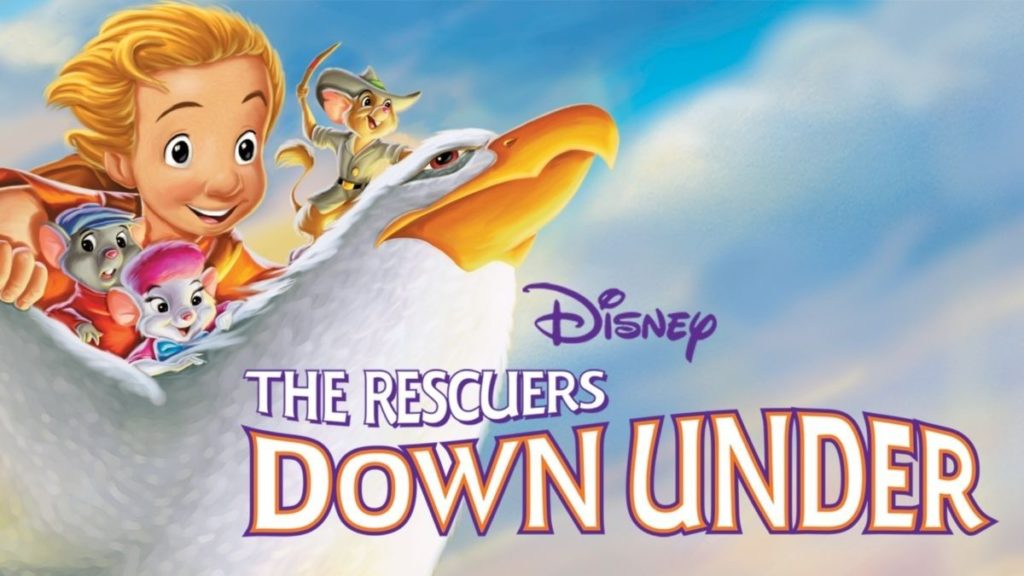
So, technically, the Rescuers Down Under falls into the period of Disney’s Renaissance Era as it was released after The Little Mermaid (1989) and was made by Disney Animation Studios. However, this movie does not feel like a Renaissance film at all. I would put this in the same category as the Dark Age of Disney.
Not Much to Love About The Rescuers Down Under
There is not much to like about the movie. The story isn’t memorable, the characters are just passable, and the writing is mediocre. In addition, this movie has one of the worst villains I’ve seen in a Disney movie in a long time. The only saving grace for the film is the animation.
In terms of the story, the Rescuer’s Down Under is a sequel to The Rescuers (1977), though it’s not necessary to have watched the previous movie. Like the first movie, the film follows two mice, Bernard and Bianca, as they try and rescue a kidnapped boy in Australia from a poacher.
The Rescuers Down Under Has a Forgettable Plot
The story is entirely forgettable, and so are the characters. The kid has magical powers to be able to talk to some (but not all) animals, and he makes it his mission to help the Australian wildlife when they need it. It’s never explained how the kid can talk to animals or how the kid can climb a 1000 ft vertical mountain without any gear, but I guess you’re supposed to let it go like many other aspects of the movie.
Though they are the main characters, Bernard and Bianca don’t feel important to the movie at all. The most important aspect of the film for them was the side plot of Bernard attempting to propose to Bianca and being jealous of their Australian hopping mouse guide.
Disney’s Most Unremarkable Villain
The movie’s villain, a poacher, is also one of Disney’s worst villains I have seen.
His entire existence is to kill animals, and to do that, he kidnapped a kid who he, for some reason, thought would know where his main prey was located. Only because he saw that the kid had a feather in his backpack. Seriously?
His plans made no sense, and he just felt evil to be evil. He even had a song about how he loves to kill animals every day and watch them suffer.
The writing, like the movie, felt second-rate. There were no memorable lines, hidden messages, or clever dialogue that Disney is known for.
The Rescuers need Rescuing
The only saving grace for the movie was the animation. However, even that didn’t feel like Disney. Instead, it felt like a similar style to the Iron Giant and other movies like that. Not Renaissance quality.
The movie was so bad that I understand why it’s not counted among the Disney Renaissance films and is generally skipped over. Still, as this movie was technically released during the era, I had to include it.
It was effortless picking the worst movie of the Disney Renaissance Era; The Rescuers Down Under wins that title.
#9 – Hercules (1997)
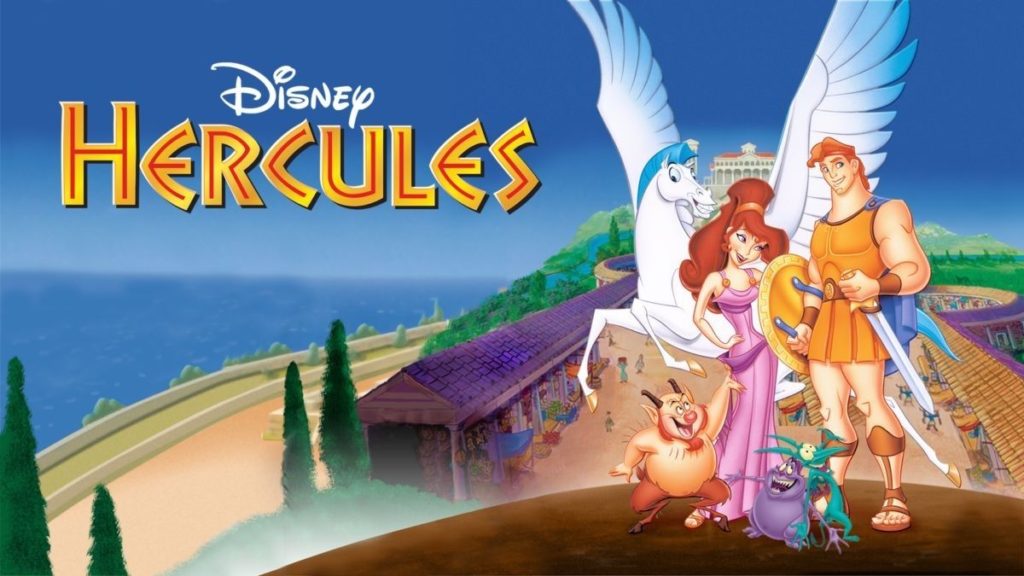
Hercules is about discovering what it means to be a true hero. It’s a coming-of-age tale of a boy becoming a man to eventually reaching godhood.
A good movie is when the main character is the best part of the movie. A sign of a great film is when the side characters are just as interesting as the main character. Hercules is a case of the latter. The side characters in the movie are just as engaging, if not more than Hercules himself.
The Story of Disney’s Hercules
At the beginning of the film, Hercules’ main problem was that he never felt like he belonged anywhere. Because of his godlike strength, he felt like an outcast to everyone else.
Hercules quickly uncovers the truth after one of the best songs in the Disney Renaissance Era, “Go the Distance.” He is the son of Zeus and Hera, making him a god. After being stolen as a baby and turning mortal, he lost his place on Mount Olympus. To restore his godhood, he has to prove himself a true hero of Earth.
From this point forward, Hercules is no longer depressed about not belonging. He has a clear goal, and a means to achieve it. He must find Philoctetes, the trainer of heroes, so that one day, he can become the greatest hero the Earth has ever seen. With that, Hercules’ most interesting plotline is concluded.
From here on out, Hercules’ entire goal for the rest of the movie is trying to prove himself a true hero to the people of Earth. That is, until he meets and falls in love with Megara.
Hercules’ Amazing Side Characters
Meg is Hercules’ primary love interest, but she has a secret. She actually is under the command of Hades, the film’s main antagonist. Like the rest of the side characters of Hercules, Meg is actually a much more interesting character.
She had been tasked by Hades to seduce Hercules and lead him to his death. For reasons made clear in the movie, Meg must do what Hades said. But, Meg can’t help but fall in love with Hercules because of his pure heart and innocent nature. Her major conflict is either following her heart or her master’s orders.
Phil is another interesting side character. He’s clearly been based on one of those coaches in a sports movie like Rocky. Amazingly voiced by Danny DeVito, Phil acts as the straight man character in the film. He’s constantly by Hercules’ side, attempting to make him into the greatest hero ever. But Hercules, blinded by his love for Meg, can’t help but make his job harder than it needs to be.
Hades, the main villain, is also great and honestly the most memorable part of the entire film. The voice acting by James Wood is perfect. His dialogue is witty and fast-paced. Also, the way Wood can go from calm to angry is a fantastic representation of the Greek God. It’s no wonder that this version of Hades may be the most iconic.
The Writing In Hercules Takes the movie from Zero to Hero
Perhaps the best part about the movie is not actually the story but instead the writing in the dialogue. Almost all of the lines said by the characters in the film (except for Hercules) are clever, witty, and fast-paced in a good way.
Most of the lines will go over the young audience’s head and are way easier to appreciate if you have any knowledge of Greek mythology. There are many references to ancient Greek stories throughout the movie, used mainly as jokes and in other minor ways visually.
The story, however, is not up to par with the rest of the Renaissance films. It’s very straightforward, and it’s not until the end that the film becomes something exceptional. The side characters, the villains, and the fantastic songs carry this film.
That’s not to say that this movie isn’t any good, because it’s excellent. It’s personally one of my favorite films and one of the easiest Disney movies to rewatch. The unfortunate truth is that Hercules is not a masterpiece.
The Main Problem With Hercules
The main problem lies with Hercules himself. Once he grows up, he still feels naive and remains that way throughout the entire film, until the last twenty minutes. His whole goal becomes centered around Meg rather than bettering himself. It makes his character arc slightly disappointing, but not exactly bad.
He does learn a valuable lesson in the end, though, that a true hero is not measured by his strength but by the strength of his heart. Throughout the movie, Hercules was pretty pure-hearted and not conceited, so shouldn’t he have been a God much earlier? An act of true self-sacrifice was the missing key in his case.
So, what does it mean when the main character is the weakest link when every other aspect of the movie is great? Luckily, a film comprises many parts, and Hercules’s different elements more than make up for its shortcomings.
Overall, even though Hercules is one of Disney’s best movies, it’s in the bottom tier compared to the other Disney Renaissance films.
#8 – The Little Mermaid (1989)
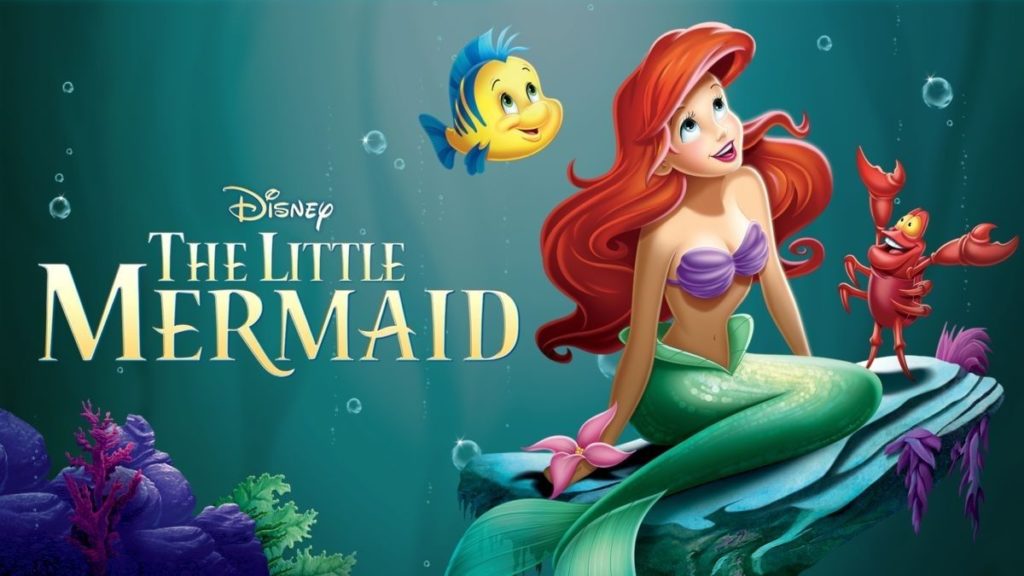
The Little Mermaid was the beginning of what is known today as the Disney Renaissance Era. The quality of The Little Mermaid far outshines almost everything Disney had released in the prior 20 years. It was the beginning of a significant turnaround for Disney as a company.
Why the Little Mermaid was so Successful
There are a few reasons why the Little Mermaid was so successful as a movie. The first reason is the musical numbers and soundtrack. With songs like “Part of Your World,” “Under the Sea,” and “Kiss the Girl,” The Little Mermaid contains some of the most famous songs in Disney’s history. Only a few movies made later had songs that became as iconic as these.
Another reason why the movie is so iconic is because of certain key moments that I like to call “million dollar shots.” These are standout shots in movies that are remembered more than any other. Two shots can be categorized as these “million-dollar shots” in The Little Mermaid.
During the song “Part of Your World,” the first is when Ariel swims up towards the camera into the light. The second shot would be during the reprise of the same song after she saves Eric and is sitting on the rock. A wave comes crashing behind her, with her hair blowing in the wind.
Shots like these can help keep movies in people’s memories. Still, to be honest, many Disney Renaissance movies have million-dollar shots just as famous as these.
But the purpose of the article isn’t to explain why these are called the Disney Renaissance movies. It’s to rank each one against the other. Therefore, how does the Little Mermaid stack up to the other Renaissance Movies?
The Main Message of the Little Mermaid
Although it’s a great film, compared to the other Disney Renaissance Movies, it ranks around the middle of the pack. My main criticism of The Little Mermaid is that there is no real message in the movie. True, not all films need a message. They can be excellent without one, as long as the story they tell is an interesting one.
The Little Mermaid does have a compelling story that’s gripping from beginning to end, so that’s not a problem. It’s just that each of the other Disney Renaissance Movies tries to get across a specific message by the end of the film, and the Little Mermaid doesn’t.
Instead, at its core, the Little Mermaid is just a romance movie about two people from different worlds falling in love. At a stretch, the message is that children need to be free to live their own life, but even that message isn’t wholly clear. I mean, Ariel, at 16, got married (not the best life decision after a few days of knowing a guy).
What was wrong with the Little Mermaid
In addition, some scenes in the movie feel like wasted minutes and unimportant to the overall plot, specifically, Sebastian vs. the chef. Though that one scene was around five minutes, in the end, the entire purpose of it was comedic relief.
In the same vein, Scuttle the Seagull felt like an unnecessary character. Scuttle didn’t need to exist at all to make sense that Ariel wouldn’t know how to use a fork or a pipe. Instead, the real reason Scuttle existed was, again, for comedy.
But, the music in the Little Mermaid makes up for the criticism. Each song is so good that even if you don’t like romance movies or unnecessary comedic bits, it’s worth watching just for them. It could be argued that this movie has the best soundtrack in the entire Renaissance collection, though so could all the other films.
Overall, though, those criticisms are mere nitpicks rather than actual complaints. The Little Mermaid is a fantastic film and deservedly belongs with the other Renaissance films.
#7 – Mulan (1998)
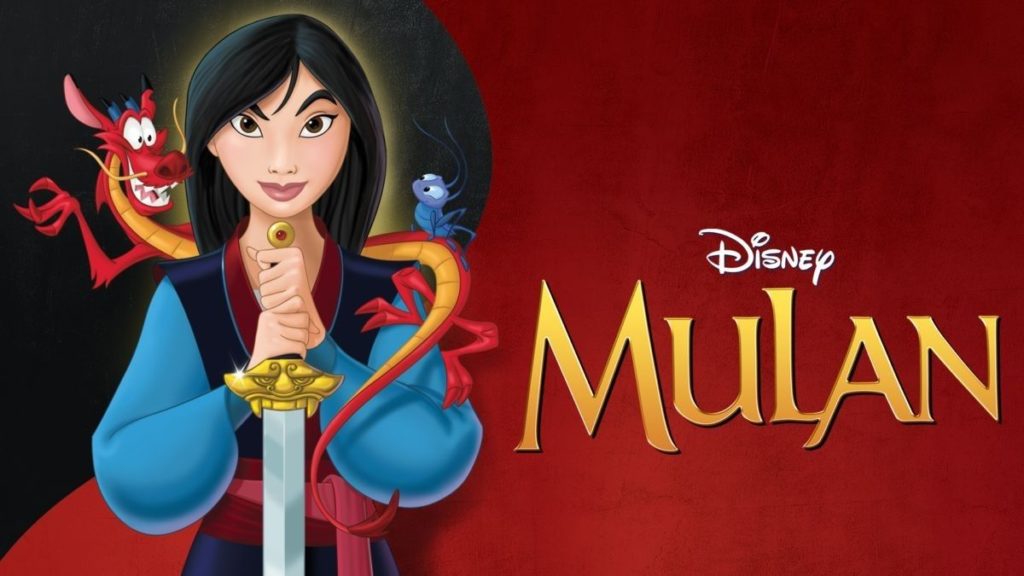
Mulan is a fantastic film for both young girls and boys. The film has many themes like honor, family, gender, and identity. These themes are centered around the main message that being true to yourself is the most important thing you can do to live a fulfilling life.
When the Huns crossed the Chinese borders, the Emperor ordered a single man from every household to fight in the army. When Mulan’s crippled father is called for duty, Mulan disguises herself as a man to join the army in her father’s place.
Gender Roles in Mulan
In this era of China, gender roles are at the forefront of society. Men are expected to be strong, masculine, and lead the household. Women are expected to stay quiet, pour the tea, be beautiful, and have little else. Mulan’s personality does not conform to societal norms. She’s strong, outspoken, and can do anything a man can do but better.
In this society, honor is more important than life. For men, bringing honor to the family can be found by serving China in its military. For women, bringing honor to the family can be found by marrying a good husband and making life easier for them, which would allow him to serve China better.
How Mulan Questions Societal Gender Roles
In Mulan, these constructed gender roles and this concept of how one can bring honor to the family is questioned. Mulan proves that society’s roles on men and women do not need to be followed to bring honor to one’s family. In reality, the most important thing a person needs to remember is to be true to themself. Be who they want to be, and in doing so, they will not only learn to love themself, but they may even make their family proud.
But it’s a long road for Mulan before she gets to that point. Arriving at that conclusion is the crux of the film. And in typical Disney fashion, with the help of some fantastic songs, hilarious characters, and great action sequences, Mulan’s journey from an unsure girl to China’s greatest hero is non-stop fun.
Overall, Mulan is an incredible movie. In terms of how it stacks up against the rest of the Disney Renaissance Films, it belongs in the mid-tier. It’s not as impactful as a movie like The Lion King, and it’s not quite as memorable as Beauty and the Beast. Still, it is just as good as Pocahontas, Tarzan, and Little Mermaid.
#6 – Tarzan (1999)
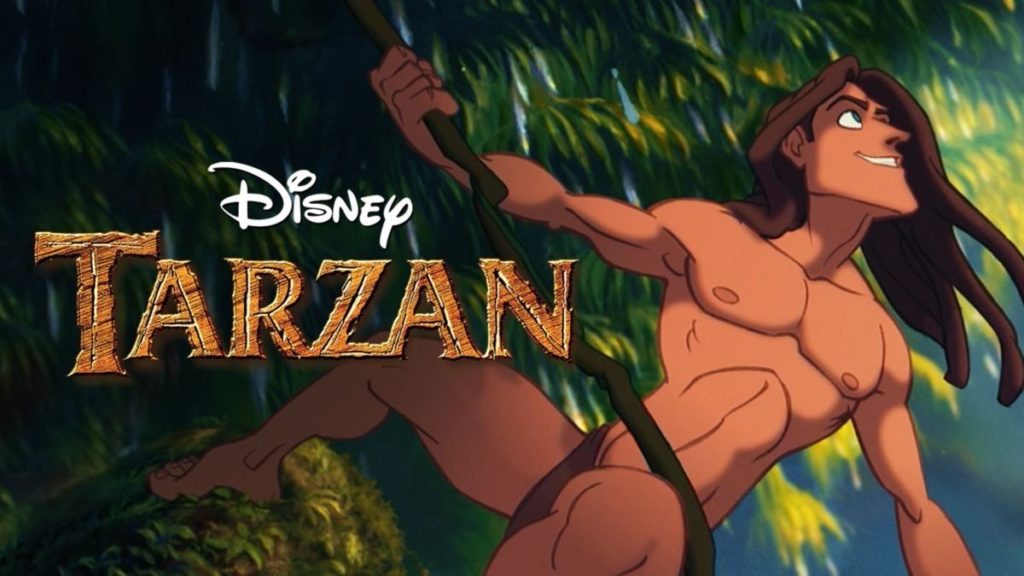
Tarzan is the last movie made during the Disney Renaissance Era. Like most other films in the Disney Renaissance Era, Tarzan is one of the best movies in the entire Disney collection.
Disney’s take on the classic tale of Tarzan is centered around family and the concept of belonging. Accompanied with an incredible soundtrack by Phil Collins, beautiful animation, and a great story, Tarzan rightfully belongs amongst the other greats of the Disney Renaissance Era.
TArzan’s Struggle In Being Different
In Tarzan, we follow Tarzan as he grows from a baby, to a child, to a grown man. Because Tarzan is a human raised by gorillas, he never felt he belonged amongst his gorilla clan. His entire purpose has been trying to fit in. Yet, no matter what he did or his accomplishments, he was never treated the same as the other gorillas by the clan leader, Kerchak.
When Tarzan grows into a man, he quickly becomes the clan’s protector as he can utilize weapons and tools that apes could never think of doing themselves. As the clan’s protector, the respect and acknowledgment that Tarzan receives from Kerchak increases, as do his responsibilities in the family.
But when Tarzan encounters a group of humans in the jungle, and they look like him, his entire worldview changes. When Tarzan finally feels like he belongs with his ape clan, the reality that he’s not an ape, but a human makes him question his entire existence. Should he join the humans and finally be amongst his own kind, or continue to live amongst the apes that raised him?
Tarzan and Jane (And how they discovered where they belong)
In Tarzan, the question of belonging is analyzed. Where does a person belong? Do they belong with the people that raised them? Do they belong amongst the people that look like them? In Tarzan, the conclusion is that they belong where their heart is.
This question is answered through the character Jane Porter. As one of the humans Tarzan first encounters, Jane wants to teach Tarzan all about the human world. She wants to impart knowledge of human society, culture, and language. But ultimately, she wanted Tarzan to come with her back to England amongst his people.
When Jane and Tarzan fall in love with one another, and their own paths are on the verge of separating, Jane asks herself, where does she belong? Does she go back to England, or does she follow her heart and stay with Tarzan?
Like with most Disney movies, the heart typically wins. In this case, Jane finds that where she belongs the most is with Tarzan. As for Tarzan, he realizes that he belongs in the jungle with his family, because that’s where his heart is.
The Beauty of Disney’s Tarzan
The animation in Tarzan is one of the best in the Disney Renaissance Era. It is consistently good, but mainly how Disney animated the lighting and the night scenes were impressive. Though, admittedly, none of the shots or sequences in the movie reach the same heights as some scenes in the greatest of the Disney Renaissance movies, like in The Lion King, Beauty and the Beast, or Aladdin.
The plot of the movie is also great. Watching Tarzan learn more about the human world and his growing relationship with Jane is very interesting. Likewise, Clayton’s subplot of discovering the location of the apes from Tarzan is equally as intriguing.
Tarzan vs. Clayton
Both Tarzan and Clayton are fighters. While Clayton fights for greed and money, Tarzan fights to protect his family. Clayton is an incredible villain as well and a perfect enemy to Tarzan.
The motivations for what they do are in complete opposition, and for Clayton, there is no redemption in his arc. He has one of the most brutal endings in all Disney during the movie.
I’m surprised they haven’t censored how Clayton’s story ends in later releases of the movie. Still, I am thankful for that because cinematically, it’s perfect.
Tarzan’s Stellar Soundtrack
In terms of the soundtrack, Tarzan has one of the best. In fact, I would argue that it’s just as good as The Lion King’s. Phil Collins created a masterpiece with these songs. Each song ultimately adds to the plot in significant ways without feeling out of place.
In a way, none of the songs feel like Disney songs. Instead, they feel like legitimate songs you would hear on the radio, at least back in the 90s when the movie was released. In other words, they don’t sound like kid songs, which I love.
Overall, Tarzan is another incredible addition to the Disney Renaissance Era. Every aspect of the film is outstanding. Tarzan belongs just outside the best of the best in terms of ranking.
#5 – Pocahontas (1995)
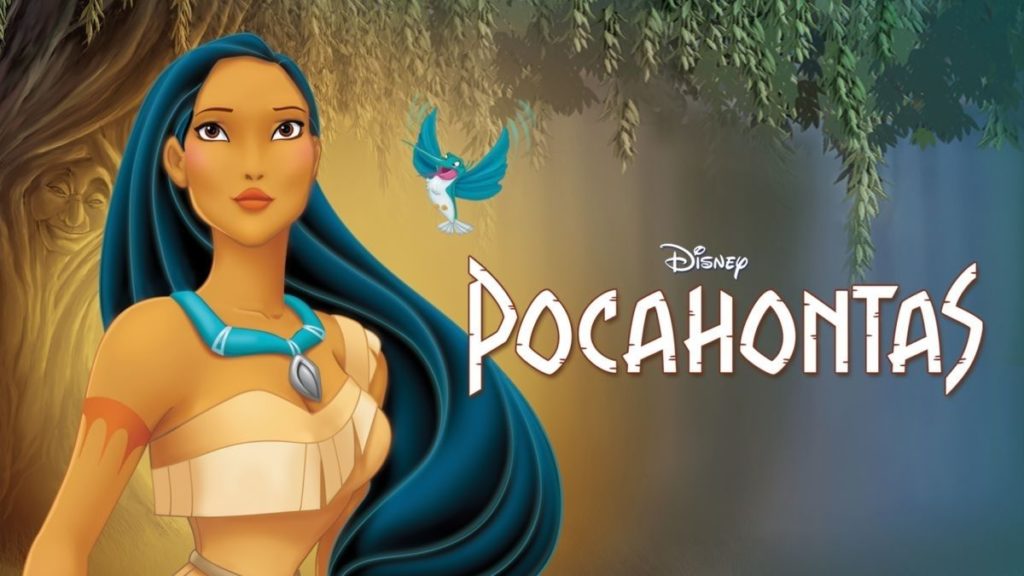
Pocahontas is undeniably a great movie. There is no aspect of the film that I dislike. In fact, there are a ton of moments and songs that I count among my personal favorite in the Disney collection.
In any other era, this would be considered one of the best. But in the Disney Renaissance Era, can it be counted amongst the absolute best? I think the movie is in the upper tier of the Disney Renaissance films and should be considered one of the best in this era of masterpieces.
The Story of Pocahontas
Pocahontas is about the daughter of an Algonquian chieftain who meets John Smith, an explorer part of the Virginia Trading Company. Pocahontas teaches him about the beauty of nature and living with the land.
Unfortunately, the leader of the exploration party, Governor Ratcliffe, wants to kill the Indians and dig up the land rich with gold. When the two forces clash, it’s up to Pocahontas and John Smith to stop the coming violence.
The Message of Pocahontas
With Pocahontas, Disney does a great job portraying what it would be like if two vastly different cultures met and interacted for the first time. As is usually the case, in reality, the meeting ends with violence more often than not. Stereotypes and the fear of the unknown breed mistrust between the two groups. An unwillingness to learn from one another often time leads to more misunderstandings. Then, add the inevitable greed for what the other has, and you have the essential ingredients for the movie’s central conflict.
If talking doesn’t work, what can you do? How can one dissuade two opposing forces with fundamental differences in ideology and beliefs from coming to violence? Where does the path of hatred lead?
In Pocahontas, the answer to that question is given by the wise words of the talking tree, Grandmother Willow. The tiniest ripples can lead to significant changes. Sometimes, taking the right path may not be easy, but necessary for the changes to come.
Pocahontas is filled with incredible messages. An interesting part about the film is that many of the messages were found within the astonishing soundtrack of the movie.
Pocahontas and The Message in the Music
In “Just Around the River Bend,” the audience learns about different paths in life one can take, including the steady path or the difficult path. What leads to the greatest joy is the path that should be chosen. It also sets up Pocahontas’ internal conflict in the film.
In “Colors of the Wind,” Pocahontas teaches John Smith about living with nature and how that doesn’t make one a savage; it actually makes one more in tune with the Earth. It also happens to be one of the most beautiful sequences in the Disney collection.
In “Savages,” the movie’s central conflict is directly told. The reason for all of the fighting is made clear as day. With lyrics like, “They’re not like you and me, which means they must be evil,” and “They’re different than us, which means they can’t be trusted,” it’s clear that racism is the driving force and the invisible evil in the movie.
This song, in particular, even though it might be a little on the nose, is excellent for younger audiences to understand why everything terrible happens.
Final Thoughts on Pocahontas
Pocahontas also has one of the best final acts in the Disney Renaissance films. The movie’s intensity ramps up from the moment John Smith is captured. With an incredible montage of songs, including “Savage,” “Colors of the Wind,” and “Just Around the River Bend,” leading to the epic conclusion of the clash of ideologies, it feels like the perfect ending to the film.
Overall, if released at other times, Pocahontas would absolutely be considered the best of the era. In the Disney Renaissance era, it’s just another title worthy of being part of the collection.
#4 – Aladdin (1992)
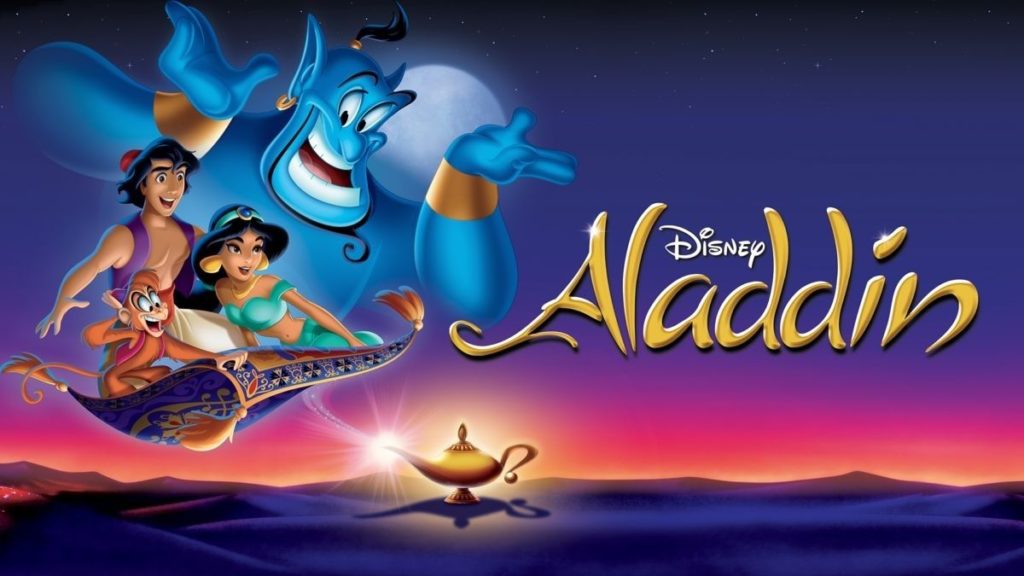
One of the many things I love about Aladdin is how well it gets across its various messages in the film while also being a fantastic movie. Like many other Disney movies before, it’s a musical and romance while also being a comedy. All sums of the whole are equally as high quality making Aladdin one of the best Disney films of the Renaissance Era.
Romance in Aladdin
In movies, romances between the main characters often feel like they come out of nowhere. It’s almost as if they share one scene together, and then the next thing we know, they fall in love without any development. It usually makes no sense at all.
That’s not the case in Aladdin. In the movie, the romance between Aladdin and Jasmine makes perfect sense. The relationship between the two characters is more developed than either Beauty and the Beast or The Little Mermaid, the two movies in the Renaissance Era that are firmly in the romance category.
The romance in Aladdin drives the movie forward and allows for the film’s main themes to manifest. The central moral themes of Aladdin are the concept of embracing who you are, why telling the truth over lies is essential, and the power of freedom and friendship.
The Story of Aladdin
One of the Kingdom of Agrabah’s rules is that a princess can only marry a prince. Jasmine, the princess, hates the rule and being controlled. She longs to marry for love, not because of status. She wants the freedom to choose who she wants to marry, rather than being forced to marry someone of her class. When Aladdin and Jasmine first meet on the streets of Agrabah after Jasmine runs away from the palace, it’s love at first sight. However, Aladdin isn’t aware of who Jasmine actually is.
Jasmine, disguised as a poor street kid, and Aladdin bond over similar reasons; they both feel trapped in their situations. Aladdin feels like his lack of money and status prevents him from living up to his potential. Jasmine feels like a prisoner in her castle, allowed to do nothing. Above all, both want the freedom to be who they want to be.
After some events happen, Jasmine thinks the boy who saved her has been executed. Instead, Aladdin is tricked by Jafar, the villain, into finding a magic lamp in a cave of wonders. And that is how Aladdin and Genie meet.
Aladdin, Genie, and the importance of being yourself
Because Aladdin rubbed Genie’s magical lamp, Aladdin receives three wishes. Aladdin is in love with Jasmine, though one strict rule of Genie’s wishes is that he will not make someone fall in love with another; so, Aladdin decides to work around that restriction by becoming a fake prince and getting Jasmine to fall in love with his phony persona. The only problem is that the relationship would be built on a lie.
After Aladdin and Jasmine are reunited, Aladdin uses his persona as Prince Ali to court Jasmine. It doesn’t take Jasmine long to realize that he’s actually the boy who saved her in the market. Unfortunately, Aladdin, being ashamed of his actual life status as a street kid, pushes the lie on Jasmine that he’s a prince and that the street kid she met was actually him disguising himself as a street urchin as she did.
The Lies of Aladdin
From there, the lies spiral out of control for Aladdin. He digs deeper until the lie becomes too much to bear when the sultan wants to make him his heir because of his “pure moral character.”
Aladdin’s failure to embrace who he is and act a certain way to impress Jasmine only worsens his problems. It’s only when he truly accepts himself and reveals the truth of who he is to Jasmine that he’s able to fully become the hero he was meant to be.
There’s a lot that Disney tries to get across in Aladdin, and they do so wonderfully, all wrapped in an incredible package. Another great aspect of Aladdin is the voice acting.
Robin Williams as Genie
Robin Williams does an outstanding job of voicing Genie in potentially the most iconic voice acting role in all Disney movies. Genie is, perhaps, one of Disney’s best characters created. He’s hilarious in his fast-paced and clever dialogue filled with improve by Robin Williams. He’s also responsible for teaching Aladdin the importance of telling the truth, being yourself, and keeping promises, all while being a great friend to Aladdin. He’s one of Disney’s most iconic characters for a good reason.
The Iconic songs of Aladdin
Another great feature of Aladdin is the songs. “Friend Like Me,” “Prince Ali,” and of course “A Whole New World” are incredible songs that are among the best in the Disney catalog.
“A Whole New World,” is the standout as the animation during the number showcasing Agrabah and the rest of the surrounding countries while also solidifying the romance between Aladdin and Jasmine, making it one of the most unforgettable sequences in the Renaissance Era.
Likewise, Jafar and Iago are one of Disney’s best villainous pairs. Equally hilarious as they are evil, they never stray from their goal of gaining ultimate power.
Overall, Aladdin is one of the best Disney Renaissance movies. Like the next three films on the list, it can easily be considered a masterpiece.
#3 – The Hunchback of Notre Dame (1996)
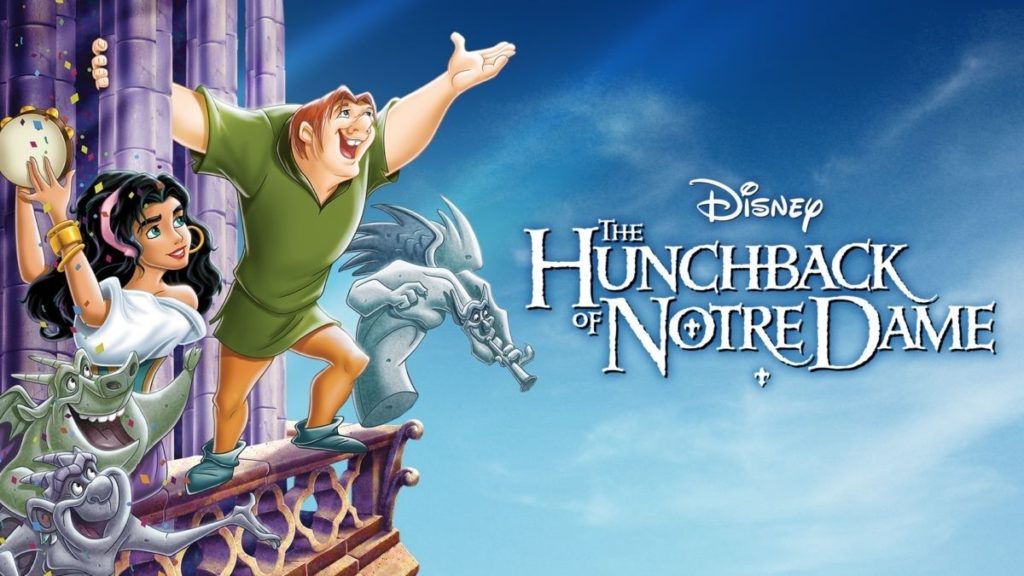
The Hunchback of Notre Dame is like Beauty and the Beast in many ways. For one, they both take place in France. Secondly, both ask the same question, what makes a monster and what makes a man?
It’s here where the stories take different paths. In Beauty and the Beast, the question was centered around the Beast, the prince who was transformed into a monster by an enchantress. In Hunchback of Notre Dame, the question is centered around Quasimodo.
In Beauty and the Beast, magic, enchantments, and love help answer the question. Beast finds love in Belle, and through her, the spell is broken, and he’s reverted back into the handsome prince he was always meant to be.
The Miserable Life of Quasimodo
In The Hunchback of Notre Dame, Quasimodo does not have any of that. There is no magic in this story; he receives no love, and he has no friends like the Beast had to help him cope with loneliness.
Instead, Quasimodo is entirely alone, forced to make imaginary friends with the gargoyles of his bell tower. He’s been deformed from birth without the help of an enchanted spell, and he has no hope of ever being handsome. No one loves him, and he’s not wanted by anybody. In short, Quasimodo has the most depressing life of any character in any Disney movie.
And even still, the question remains. Do outside appearances and unfortunate circumstances in life make a man. The answer is no. Even though Quasimodo has nothing going for him, that doesn’t stop him from having a pure heart. And that, above anything else, is what’s really important.
The Hunchback of Notre Dame is Disney’s Darkest Film
The Hunchback of Notre Dame is Disney’s most adult film by far. Very early on, it’s noted that Quasimodo has been alone in the tower for 20 years, using the gargoyles, who can’t talk and are inanimate (a sign of the state of his mental health), as his only friends. Even the only comedic relief in the movie has a depressing story with that insight.
He’s a prisoner to Frollo, who acts as if he’s doing Quasi a favor by even letting him live. Not only that, Frollo is bent on making Quasimodo hate himself. In the song “Out There,” it’s revealed that Frollo has taught Quasimodo from a young age that he is deformed and ugly, that his very existence is a crime against humanity, and that he is a monster people will hate.
Yet, somehow, Quasimodo still possesses the urge to leave his bell tower and be amongst the people. His pure heart can’t possibly prepare him for the cruel truth of reality.
Frollo and his obsession with Esmeralda
The reality of Notre Dame is that the city is one of unacceptance. Anyone different from what’s considered normal is treated as an outcast. The gypsy people are at the forefront of these discriminations, and Frollo is on a mission to rid the city of them all. However, a single gypsy woman named Esmeralda is at the forefront of Frollo’s attention.
Frollo’s obsession with Esmerelda is primarily sexual but began during the Festival of Fools when she helped Quasimodo against his orders after a humiliating event where Quasi was being tortured by townsfolk. Esmeralda’s problem with Frollo stems from the fact that although he acts high and mighty as if what he does is just, in reality, he turns a blind eye to the people who genuinely need help, like the gypsies and Quasimodo.
To Unlearn what once was Taught
Therein lies the central conflict of the film and the beginning of a friendship (and one-sided crush) between Quasimodo and Esmeralda. Esmeralda helps teach Quasi that Frollo has been wrong the entire time. Quasi is no monster. His heart is pure, and he’s a good person. Likewise, gypsies aren’t evil, as Frollo says. Instead, they are misunderstood people who value freedom.
When Frollo begins burning down Notre Dame and capturing other gypsies in search of Esmeralda, Quasimodo must go against everything Frollo taught to save Esmeralda and the rest of the rest the gypsies. Even though he knows he will never be loved or accepted by the people nor win the heart of the woman he loves, Quasi still must find it within himself to become the hero the people need.
Final Thoughts on The Hunchback of Notre Dame
Overall, The Hunchback of Notre Dame is one of Disney’s darkest movies and one of my favorites. The soundtrack and animation are of the highest quality from beginning to end. Each song in the movie is masterful, and I would argue that if it wasn’t for the gargoyle song, this film might have the best soundtrack out of all Disney movies. To be fair, the gargoyle song instantly becomes better when you realize that the entire thing is happening in his head.
It’s an incredible movie, and like most, the Disney Renaissance Films can be considered a masterpiece. If it weren’t for the gargoyles, The Hunchback of Notre Dame would have been the best Disney Renaissance Movie altogether. But to be the best, the movie had to be flawless. These next two films are exactly that.
#2 – Beauty and the Beast (1991)
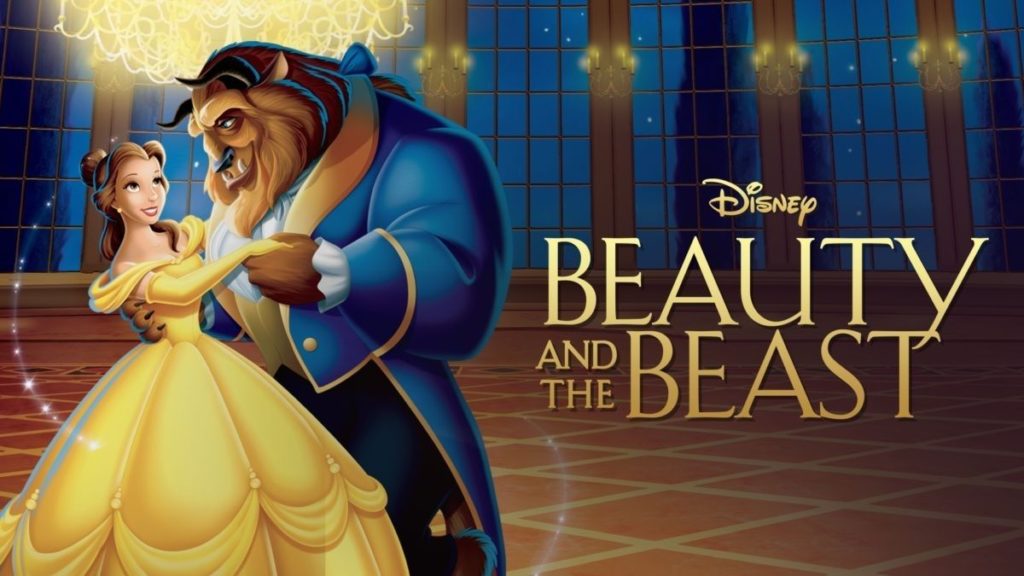
Masterpiece is not a word that should be used lightly. A masterpiece, according to Merriam-Webster, is “a supreme intellectual or artistic achievement.” A masterpiece, therefore, is a work of art that is nearly perfect in all ways, an achievement. Beauty and the Beast is a masterpiece.
From the first second of the opening, you can immediately sense how high the quality of the film Beauty and the Beast is. It does a beautiful job of clearly stating the moral of the movie, “beauty within is more important than outward appearances,” in the opening montage illustrated through murals on Beast’s castle. This is then followed by a question asked by the narrator that frames the entire film, “who could ever love a beast?”
Belle
Immediately after, one of the best opening songs in Disney history begins with “Belle.” The song itself is incredible for two reasons. First, the entire song introduces us to the main protagonist, Belle. But cleverly, it does it through gossip from townsfolk as she passes by them.
In this song, multiple vital characters and the world is established.
We meet Belle as she wanders the town, reading a book. Through this song alone, we already know so much about Belle as a person and her character. We know she loves reading, dreams of adventure and romance, and is admired for her beauty by all of those around her, yet she is considered odd and different because she never flaunts those characteristics; she just acts like herself.
We also are introduced to Gaston. Through this song, his entire motivations and personality are made clear. We know he wants to marry Belle, and he’s devised a plan to woo her. We learn he’s completely narcissistic, yet he has no reason not to be because he’s loved and admired by all of the townspeople.
There are not many songs in the entire Disney collection that are as informative as “Belle” is in Beauty and the Beast. And the significant part, we learn all of this within the first 8 minutes of the movie.
The Highest Quality from beginning to end
The quality doesn’t end there, however. It remains until the very end of the movie. The best part about Beauty and the Beast is the character development of the two main characters, but mainly the Beast. While Belle is pretty much the perfect girl without any flaws from the very beginning of the film to the very end, Beast is an entirely different character by the film’s end.
The character’s transition is evident in the song “Something There.” Still, just by watching Beast’s actions in the movie, you can see how much Belle had been an influence on him.
The other Songs in Beauty and the Beast
There are also so many beautiful moments throughout the entire film worth mentioning. Of course, the dinner scene with “Be Our Guest” is one of the highlights, and then the incredible ballroom dance during “Beauty and the Beast.” There are more unforgettable moments in this movie than in most Disney movies.
Then there is Gaston, one of Disney’s best villains. He’s hilarious, and his lines are incredible. His personal song is one of the best in the movies, and his final fight with Beast is excellent. He’s one of the best characters in a film filled with a fantastic cast.
Overall, Beauty and the Beast is, in my opinion, one of the best Disney Renaissance Movies and a genuine masterpiece in film.
#1 – The lion King
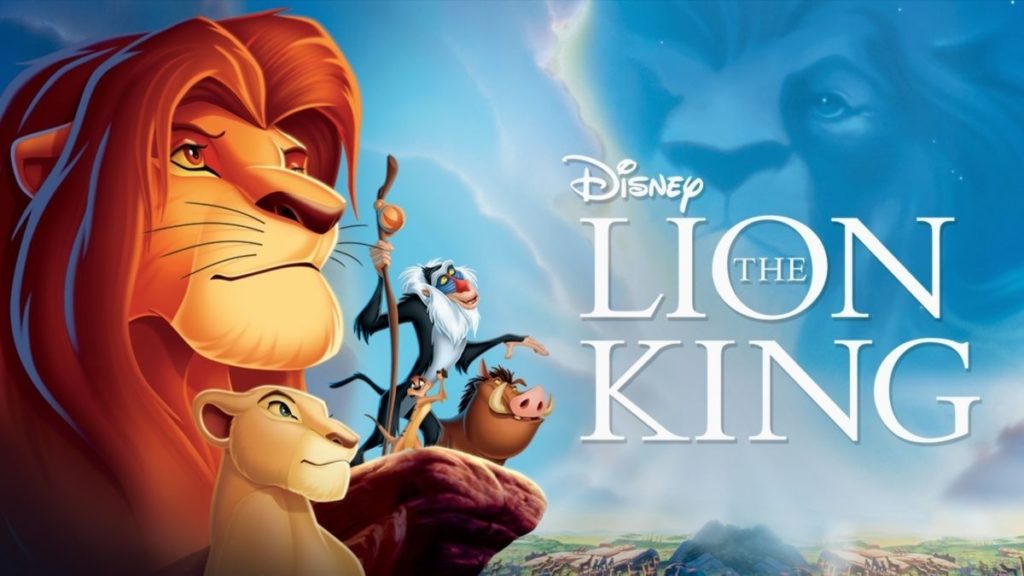
The Lion King is one of Disney’s greatest movies of all time. It can be argued that this movie is the king of all the Disney Renaissance and perhaps, the best Disney movie of all time.
The Epic Opening of The Lion King
It begins with the iconic opening featuring “The Circle of Life.” This scene showcases what can be expected while watching the rest of the film; beautiful animation, incredible music, and near-perfect storytelling.
The Lion King is about a relationship between a father and son, the burdens of guilt, learning from the past, and accepting responsibility. This is a coming-of-age story about Simba, the son of King Mufasa and the prince and heir to Pride Rock. Simba goes through significant character growth throughout the movie that is easily the best in any Disney movie.
We watch Simba go from a naive and prideful young cub to a depressed and unconfident young lion and finally the king he was always meant to be.
Simba’s Evolution in The Lion King
Simba’s evolution truly begins after a disastrous trip he takes with Nala, a female lion cub, to an elephant graveyard. The trip quickly becomes dangerous when Simba and Nala are attacked by hyenas, only to be rescued by Mufasa. Though his father specifically told him to never go into the Shadowlands, which were outside his kingdom’s borders, Simba decides to test his bravery and venture there with the pushing of his Uncle Scar.
Through this experience, Simba begins his journey and learns from Mufasa about maturity and why he’s brave. He also learns about Mufasa’s theory that all the past kings live as stars and always watch over them.
Then in one of the greatest betrayals in all of Disney and movie history, Mufasa is out of Simba’s life forever, and Simba feels entirely responsible for it. This leads to Simba’s downward mental spiral, where he decides to run away from his problems and essentially die.
The Problem Free Philosophy
When things seem over for Simba, he meets Timon and Pumba. They essentially save his life and help him forget about his worries (with the help of one of the best songs ever in “Hakuna Matata”). With Timon and Pumba’s help, Simba grows up as a runaway lion with a problem-free philosophy.
Though Simba’s new mindset of Hakuna Matata helps him on a surface level, he still realizes he’s running away from the responsibilities that come with being heir to the throne. He’s unhappy with himself and who he has become. He especially feels like a failure to his deceased father. When Nala reappears in his life and tells him of the horrible state of Pride Rock under the rule of Scar, Simba truly reevaluates everything he’s become.
Further, with Rafiki’s help, he realizes that his father lives in him. As long as he remembers who he is, he can take his place in the circle of life. He is his father’s son and the one true king. Here, he accepts his responsibilities and what he must do to save the Pride Lands, even if it means facing his past.
The movie concludes with the epic confrontation of Simba vs. Scar and him becoming the king he was always meant to be. The transformation becomes complete with an iconic roar from Simba, a much different one from when he was a cub, symbolizing that his growth has been completed. And then, in an incredible finale mirroring the opening, Simba and Nala reveal their new child showing that, as always, the circle of life continues.
Final Thoughts on the Lion King and a Recommendation
As an aside, if you haven’t already heard it before, check out the soundtrack from The Lion King Broadway show. The broadway adaptation takes this incredible soundtrack to even greater heights with songs like “He Lives in You,” “Shadowlands,” and “Endless Night.” I wish those songs could have been in the original movie, but they were only created after it was already made. Though, if you listen closely, many of the songs act as background music to certain scenes in the movie, so that’s great.
Overall, The Lion King is one of the best Disney movies of all time. It’s a cinematic masterpiece and one of the greatest of the Disney Renaissance Movies. In fact, I think The Lion King is the best Disney Renaissance Movie.
In Conclusion
The Disney Renaissance Era is not only the best in Disney history, but it’s also one of the most significant times in cinematic history.
The impact that these nine (Rescuer’s Down Under unfortunately cannot be counted) movies have had in the animation arts is incalculable.
Nine of these films can be argued as being masterpieces, and the fact that they were made year after year adds to the brilliance that Disney was in the 90s.
It’s a shame that the next 10 years would be such a letdown compared to what was.
Because after the Disney Renaissance Era came the Forgotten Era of Disney, better known as the 2000s.
TL;DR
- #10 – Rescuers Down Under (1990)
- #9 – Hercules (1997)
- #8 – The Little Mermaid (1989)
- #7 – Mulan (1998)
- #6 – Tarzan (1999)
- #5 – Pocahontas (1995)
- #4 – Aladdin (1992)
- #3 – The Hunchback of Notre Dame (1996)
- #2 – Beauty and the Beast (1991)
- #1 – The Lion King (1994)

